15 Ng. 100 Đ. Nguyễn Xiển, Thanh Xuân Nam, Thanh Xuân, Hà Nội 100000
Imagine a place where snow-capped peaks pierce the azure sky, ancient monasteries hum with sacred chants, and pristine alpine meadows bloom with wildflowers. A land where Tibetan culture thrives in its purest form, and the air is imbued with a profound sense of peace. This is Shangri-La (Xianggelila), a name that evokes images of an earthly paradise, famously immortalized in James Hilton's 1933 novel Lost Horizon. More than just a literary concept, Shangri-La is a tangible reality in the breathtaking highlands of northwestern Yunnan Province, China. Here, at the gateway to the Tibetan Plateau, you'll discover a vibrant cultural tapestry woven into a landscape of unparalleled natural beauty. If you're yearning for a journey that transcends the ordinary, one that promises spiritual serenity, awe-inspiring vistas, and deep cultural immersion, Shangri-La is a destination that truly lives up to its legendary name.
The story of Shangri-La is a fascinating blend of literary inspiration, historical context, and the remarkable efforts to preserve a unique cultural identity.
In Lost Horizon, James Hilton described Shangri-La as a mystical, harmonious valley hidden in the Kunlun Mountains, where inhabitants live in blissful isolation, free from the ravages of time. The novel captured the imagination of a world yearning for peace amidst global turmoil, turning "Shangri-La" into a synonym for an idyllic, utopian land.
For decades, adventurers and scholars debated the real-world location that might have inspired Hilton. Many theories pointed to regions in Tibet and its cultural spheres. In 2001, Diqing Tibetan Autonomous Prefecture, an area that perfectly matched the novel's descriptions of snow-capped mountains, ancient monasteries, and serene valleys, officially adopted the name "Shangri-La City." This decision brought the mythical paradise into the realm of reality, establishing it as a beacon of Tibetan culture and natural beauty.
Geographically, Shangri-La sits in the historical region of Kham Tibet, a vibrant cultural zone that bridges the Tibetan Plateau with the lowlands of Yunnan and Sichuan. For centuries, this area has been a vital crossroads for trade, pilgrimage, and cultural exchange. Its rugged terrain naturally fostered a strong, independent spirit among its Tibetan inhabitants, known for their horsemanship, devout Buddhism, and rich artistic traditions.
The people of Shangri-La are predominantly Tibetan, but the region is also home to other ethnic groups like the Naxi, Yi, Lisu, and Bai, each contributing to the rich cultural mosaic. This blend of traditions creates a unique atmosphere where ancient customs thrive alongside the modern world.
Theravada Buddhism, which dominates much of Southeast Asia, is less common here. The predominant spiritual influence in Shangri-La is Tibetan Buddhism (Vajrayana Buddhism), a distinct form of Mahayana Buddhism. This faith permeates every aspect of life, from the prayer flags fluttering in the wind to the intricate murals in the monasteries and the deeply spiritual demeanor of the local people. The presence of grand monasteries, dedicated monks, and the ubiquitous sound of mantras reflect the profound devotion that defines the region's spiritual landscape. The pursuit of enlightenment, compassion, and respect for all living things are central tenets that shape the Shangri-La experience.
Shangri-La offers a diverse range of attractions, blending spiritual sites with breathtaking natural wonders and vibrant cultural experiences.
Often referred to as the "Little Potala Palace" due to its architectural resemblance to Lhasa's iconic landmark, Ganden Sumtseling Monastery is the largest Tibetan Buddhist monastery in Yunnan. Founded in 1679 by the 5th Dalai Lama, it is the spiritual heart of Shangri-La.
Architectural Grandeur: The monastery is a magnificent complex of golden-roofed temples, monks' dormitories, and prayer halls, built into a hillside overlooking a serene lake. Its intricate murals, elaborate statues, and traditional Tibetan artistry are breathtaking.
Spiritual Hub: It is home to hundreds of monks and serves as an active learning and worship center for the Gelug school of Tibetan Buddhism. Witnessing monks chanting or engaging in philosophical debates offers a profound insight into their spiritual life.
Festivals: The monastery is the focal point for major Tibetan festivals, such as the Gedong Festival, where monks perform sacred masked dances.
This ancient town is the historical and cultural core of Shangri-La City. With a history stretching back over 1,300 years, Dukezong was once a vital stop on the Tea Horse Road, known as the "City of Moonlight."
Preserved Architecture: Despite a devastating fire in 2014, much of the ancient town has been meticulously rebuilt and restored, preserving its traditional Tibetan architecture with wooden houses, narrow cobblestone streets, and prayer flags fluttering everywhere.
Giant Prayer Wheel: At the highest point of the town, on Guishan Hill (Turtle Hill), stands the world's largest prayer wheel. Visitors can join locals in turning the enormous golden cylinder, a spiritual act that is believed to accumulate merit.
Cultural Hub: Explore quaint shops selling Tibetan handicrafts, teahouses, and restaurants. In the evenings, locals often gather for traditional Tibetan circle dances in the central square, often inviting visitors to join.
As China's first national park to meet international standards set by the IUCN, Pudacuo National Park is a pristine wilderness of unparalleled beauty. It's a sanctuary for rare and endangered species and a breathtaking example of alpine ecosystems.
Bitahai Lake (碧塔海): A stunning alpine lake surrounded by dense forests and snow-capped mountains. A boardwalk allows visitors to stroll along its shores, absorbing the tranquility.
Shudu Lake (属都湖): Another beautiful lake within the park, known for its clear waters and surrounding meadows where yaks graze peacefully.
Diverse Ecosystems: The park is home to a rich variety of flora and fauna, including rare orchids, Tibetan macaques, and various bird species. Visitors can enjoy hiking, boat rides, and simply basking in the untouched natural splendor.
Located just outside Shangri-La City, Napa Lake is a seasonal plateau wetland and an essential natural reserve.
Seasonal Beauty: In spring and summer, the lake is a vast expanse of water, surrounded by lush grasslands. In autumn, the meadows turn golden, and in winter, it becomes a frozen wonderland.
Birdwatching: It's a significant habitat for migratory birds, including the rare black-necked crane, making it a birdwatcher's paradise, especially from late autumn to early spring.
Local Life: You'll often see local Tibetan herdsmen grazing their yaks and horses along the lakeside, adding a pastoral charm to the landscape. Horseback riding is a popular activity here.
While often associated with Lijiang, the upper sections of Tiger Leaping Gorge are considered the eastern gateway to Shangri-La. It is one of the deepest and most spectacular river canyons in the world, carved by the mighty Jinsha River (upper Yangtze).
Dramatic Scenery: The gorge is framed by the towering Jade Dragon Snow Mountain (Yulong Xueshan) and Haba Snow Mountain (Haba Xueshan), reaching heights of over 5,000 meters above the roaring river.
Hiking Opportunities: Famous for its challenging yet rewarding hiking trails, ranging from the easy Lower Gorge (road access) to the more strenuous Upper Gorge (High Trail).
Mythical Legend: Named after a legend that a tiger once leaped across the narrowest point to escape a hunter.
Rising majestically near Shangri-La City, Shika Snow Mountain is a sacred peak and an increasingly popular destination for its stunning views and high-altitude experience.
Cable Car Access: A long cable car ride takes visitors to near the summit (around 4,500m), offering breathtaking panoramic views of the surrounding Himalayan peaks, including Meili Snow Mountain on clear days.
High-Altitude Scenery: Experience alpine meadows, forests, and glacial landscapes. Be mindful of altitude sickness at this elevation.
Pilgrimage Site: For Tibetans, it is a sacred mountain, often visited for pilgrimage.
Shangri-La offers a profound cultural immersion into the rich tapestry of Tibetan life, where ancient traditions are vibrantly alive.
Tibetan festivals are deeply rooted in their Buddhist faith and lunar calendar, offering vibrant spectacles of color, music, and devotion.
Gedong Festival (格冬节): Usually held in late November/early December (29th day of the 10th lunar month) at Sumtseling Monastery, this is the most important festival, featuring sacred masked dances (Cham dances) performed by monks to dispel evil spirits and usher in good fortune. It's a powerful spiritual and visual experience.
Horse Racing Festival (赛马节): Held in spring or early summer, this lively festival showcases the Tibetans' legendary horsemanship with races, traditional wrestling, and singing.
Torch Festival (火把节): Celebrated by various ethnic groups (including Yi, Naxi, Bai, and Lisu) around June/July, with bonfires, singing, dancing, and traditional rituals to pray for good harvest and ward off evil.
Tibetan New Year (Losar): Usually in February or March, a significant family-oriented celebration with special foods, prayers, and visits.
Attending a festival offers an unparalleled opportunity to witness authentic Tibetan culture in its most exuberant form.
Tibetan cuisine in Shangri-La is hearty and nourishing, designed to sustain life in the high-altitude environment. It emphasizes local ingredients and traditional cooking methods.
Yak Butter Tea (酥油茶 - Su You Cha): The quintessential Tibetan drink, a salty, rich tea made with yak butter, essential for warmth and energy at altitude. It's an acquired taste for some, but a cultural must-try.
Tsampa (糌粑 - Zang Ba): Roasted barley flour, a staple food, often mixed with yak butter tea into a dough.
Yak Meat: A primary source of protein, prepared in various ways: stewed, dried (yak jerky), or grilled. Yak hotpot is a popular option.
Tibetan Barley Wine (青稞酒 - Qing Ke Jiu): A mildly alcoholic beverage made from highland barley, often served warm.
Highland Barley Bread (青稞饼 - Qing Ke Bing): A simple, dense bread made from barley flour.
Momos (包子 - Bao Zi): Tibetan dumplings, typically filled with yak meat or vegetables.
Dairy Products: Fresh yak yogurt, cheese, and milk are common.
Dining in local Tibetan restaurants or guesthouses provides an authentic taste of the highlands.
Tibetan culture is rich in artistic expression. Visitors can find:
Thangka Paintings: Intricate Buddhist scroll paintings depicting deities, mandalas, and spiritual narratives.
Tibetan Carpets: Hand-woven carpets with traditional patterns and vibrant colors.
Silver and Turquoise Jewelry: Beautifully crafted ornaments, often incorporating turquoise, coral, and other precious stones.
Prayer Wheels: Handheld or large, stationary cylinders inscribed with mantras, turned clockwise to accumulate merit.
Incense: Traditionally made from local herbs and spices.
Exploring the shops in Dukezong Ancient Town offers a chance to purchase authentic handicrafts and support local artisans.
A visit to Sumtseling Monastery offers a profound insight into monastic life. Observing monks in prayer, listening to their deep chants, or simply walking the Kora (pilgrim's path) around the monastery is a deeply spiritual experience. Prayer flags, mani stones (stones carved with mantras), and stupas (reliquary mounds) are ubiquitous, reflecting the pervasive nature of Buddhist faith in Shangri-La. Respectful attire (shoulders and knees covered) is appreciated when visiting monasteries.
Venturing to a high-altitude, culturally rich destination like Shangri-La requires careful planning and expert guidance to ensure a comfortable, safe, and truly enriching experience. Golden Trail Travel specializes in crafting authentic and immersive journeys through Yunnan and the Tibetan cultural regions, offering unparalleled expertise to make your Shangri-La adventure seamless and truly unforgettable.
Unrivaled Local Expertise & Altitude Acclimatization: Golden Trail Travel's team possesses deep, firsthand knowledge of Shangri-La, its unique cultural nuances, and crucial considerations for high-altitude travel. They prioritize your safety and comfort, designing itineraries that allow for proper altitude acclimatization to minimize the risk of altitude sickness. They know the best local guides who can offer genuine insights into Tibetan culture.
Tailor-Made Itineraries: Whether you're a spiritual seeker, an avid hiker, a photography enthusiast, or simply looking for a peaceful retreat, Golden Trail Travel can customize an itinerary to perfectly match your interests, pace, and budget. From luxurious comfort to adventurous trekking, your journey will be uniquely yours.
Seamless Logistics: Navigating flights, high-altitude transportation, securing comfortable accommodations (especially during peak seasons or festivals), and finding knowledgeable local guides can be challenging. Golden Trail Travel handles all these complexities, ensuring comfortable transfers, carefully selected hotels or guesthouses, and insightful local guides who enhance your understanding of Shangri-La's rich heritage and natural beauty.
Authentic Cultural Immersion: Golden Trail Travel goes beyond standard sightseeing. They offer exclusive opportunities for genuine cultural immersion, such as respectful visits to local Tibetan families, participation in traditional activities (like turning the giant prayer wheel with locals), learning about Tibetan Buddhism, and experiencing local cuisine.
Dedicated Support and Safety: With 24/7 support and an unwavering commitment to traveler safety, Golden Trail Travel provides peace of mind throughout your journey. This allows you to relax, explore, and fully embrace the Shangri-La experience without any worries, knowing you are in capable hands.
Option 1: Shangri-La Spiritual & Nature Retreat (3-4 Days) This itinerary focuses specifically on Shangri-La, allowing for deep immersion in its spiritual and natural highlights while allowing for acclimatization.
Day 1: Arrival in Shangri-La & Dukezong Exploration.
Morning/Afternoon: Arrive at Diqing Shangri-La Airport (DIG). Golden Trail Travel will arrange a comfortable private transfer to your hotel. Focus on rest and hydration for altitude acclimatization.
Late Afternoon: Gently explore Dukezong Ancient Town. Visit the Giant Prayer Wheel on Guishan Hill. Enjoy a traditional Tibetan dinner and observe local evening circle dances.
Day 2: Sumtseling Monastery & Pudacuo National Park.
Morning: Visit Ganden Sumtseling Monastery, the spiritual heart of Shangri-La. Explore its halls, witness monastic life, and walk the Kora path.
Lunch: Enjoy a local lunch.
Afternoon: Explore Pudacuo National Park, walking along the boardwalks of Bitahai Lake and Shudu Lake, immersing yourself in the pristine alpine environment.
Evening: Relaxation and prepare for the next day.
Day 3: Napa Lake & Local Tibetan Life.
Morning: Visit Napa Lake, enjoying its seasonal beauty, birdwatching opportunities (seasonal), and the sight of local herdsmen with their yaks and horses. Consider horseback riding (optional).
Afternoon: Engage in a cultural experience: visit a local Tibetan family for tea, learn about their daily life, or participate in a traditional craft demonstration.
Evening: Enjoy a farewell dinner with more Tibetan specialties.
Day 4: Shika Snow Mountain (Optional) & Departure.
Morning: (Optional, for those well-acclimatized and adventurous): Take the cable car up Shika Snow Mountain for breathtaking high-altitude views.
Transfer: Golden Trail Travel will arrange your private transfer to Diqing Shangri-La Airport for your onward journey.
Option 2: Yunnan Classic Trail: Lijiang & Shangri-La (6-7 Days) Combine the ancient beauty of Lijiang with the mystical allure of Shangri-La, ideal for a first-time Yunnan visit.
Days 1-3: Lijiang Ancient Charm.
Arrive in Lijiang Sanyi Airport (LJG). Explore Lijiang Old Town (UNESCO), the Black Dragon Pool, and local Naxi culture. Day trip to Jade Dragon Snow Mountain or Shuhe Ancient Town. Overnight in Lijiang.
Days 4-7: Shangri-La High Altitude Paradise.
Travel from Lijiang to Shangri-La by private car (approx. 3-4 hours), making a stop at Tiger Leaping Gorge for a short hike or viewpoint visit (lower gorge).
Follow the Shangri-La itinerary as per Option 1, focusing on Dukezong Ancient Town, Sumtseling Monastery, Pudacuo National Park, and Napa Lake. Allow ample time for acclimatization.
Day 7: Departure from Diqing Shangri-La Airport (DIG) or return to Lijiang.
Option 3: Grand Yunnan & Tibetan Cultural Journey (9-12 Days) A comprehensive tour combining Kunming, Dali, Lijiang, and Shangri-La for a deep dive into Yunnan's diverse landscapes and cultures.
Days 1-2: Kunming Arrival & City Exploration.
Arrive in Kunming, explore Green Lake Park, Yunnan Provincial Museum, and local markets. Overnight in Kunming.
Days 3-4: Dali Old Town & Erhai Lake.
Train/drive to Dali. Explore Dali Ancient City, visit the Three Pagodas of Chongsheng Temple, and enjoy a leisurely time by Erhai Lake. Overnight in Dali.
Days 5-7: Lijiang Naxi Culture.
Train/drive to Lijiang. Explore Lijiang Old Town, Shuhe Ancient Town, and the Jade Dragon Snow Mountain area. Overnight in Lijiang.
Days 8-11: Shangri-La Mystical Highlands.
Travel to Shangri-La via Tiger Leaping Gorge. Immerse in Shangri-La's spiritual and natural beauty, visiting Dukezong, Sumtseling Monastery, Pudacuo National Park, Napa Lake, and optionally Shika Snow Mountain. Allow ample acclimatization time. Overnight in Shangri-La.
Day 12: Departure.
Departure from Diqing Shangri-La Airport (DIG) or return to Kunming/Lijiang for onward travel.
Ready to embark on your unforgettable journey to the mythical Shangri-La? Visit Golden Trail Travel's website to explore their curated Yunnan and Tibetan cultural tours and easily book your adventure: https://goldentrailtravel.com/
Shangri-La is more than just a beautiful place; it's a profound journey into the heart of Tibetan culture and a testament to the enduring human spirit. The majestic landscapes, from the towering snow mountains to the serene alpine lakes, inspire awe and remind us of nature's grandeur. The crisp, clean air invigorates the senses, and the vast open spaces encourage quiet contemplation. It's a place where you can truly disconnect from the modern world's clamor and reconnect with something ancient and profound.
What truly defines Shangri-La is its vibrant Tibetan Buddhist heritage. The sight of monks in their crimson robes, the rhythmic chanting emanating from monasteries, and the vibrant prayer flags fluttering in the wind create an atmosphere of deep spirituality. The warmth and resilience of the local Tibetan people, their genuine hospitality, and their unwavering devotion to their faith are incredibly moving. Engaging with locals, trying yak butter tea in a traditional home, or participating in a communal dance offers an authentic connection that transcends the typical tourist experience.
Shangri-La challenges visitors to embrace the simple yet profound beauty of life at high altitude, to respect ancient traditions, and to find their own sense of peace amidst breathtaking surroundings. It's a destination that captivates not just the eye but also the soul, leaving an indelible mark and a longing to return to this earthly paradise. Whether you seek adventure, spiritual enlightenment, or simply a breathtaking escape, Shangri-La promises an unforgettable journey into a realm where myth and reality beautifully converge.
Q1: Where is Shangri-La located? A1: Shangri-La City is located in Diqing Tibetan Autonomous Prefecture, in the northwestern part of Yunnan Province, China. It is situated on the edge of the Tibetan Plateau.
Q2: What is the best time to visit Shangri-La? A2: The best times to visit Shangri-La are from May to June (spring/early summer, for wildflowers and lush green scenery) and September to October (autumn, for golden foliage and clear skies). The shoulder seasons (April and November) can also be beautiful with fewer crowds. Winter (December-March) is cold and snowy but offers stunning white landscapes and unique cultural experiences, though some areas may be less accessible.
Q3: How do I get to Shangri-La? A3: The easiest way to get to Shangri-La is by flying directly to Diqing Shangri-La Airport (DIG) from major Chinese cities like Kunming, Chengdu, or Chongqing. Alternatively, you can take a scenic private car or bus from Lijiang (approx. 3-4 hours), often incorporating a stop at Tiger Leaping Gorge. Golden Trail Travel can arrange all your transfers.
Q4: What are the main attractions in Shangri-La? A4: The main attractions include Ganden Sumtseling Monastery, Dukezong Ancient Town (with its Giant Prayer Wheel), Pudacuo National Park (Bitahai and Shudu Lakes), and Napa Lake. Nearby Tiger Leaping Gorge (upper sections) and Shika Snow Mountain are also popular.
Q5: How long should I plan to stay in Shangri-La? A5: A stay of 2 to 3 full days (3-4 nights) is recommended to cover the main attractions and allow for proper altitude acclimatization. If you plan to do extensive hiking or explore more remote areas, you might consider longer.
Q6: What about altitude sickness in Shangri-La? A6: Shangri-La is at an elevation of around 3,200 meters (10,500 feet). Altitude sickness is a possibility for some travelers. It's crucial to ascend gradually, stay hydrated, avoid strenuous activity on your first day, and limit alcohol/caffeine. Golden Trail Travel builds itineraries that consider acclimatization. Consult your doctor before traveling if you have concerns.
Q7: What kind of accommodation is available in Shangri-La? A7: Accommodation in Shangri-La ranges from charming boutique guesthouses and traditional Tibetan inns in Dukezong Ancient Town to more modern hotels in the new city. There are options to suit various budgets, often offering beautiful views and a warm atmosphere.
Q8: What unique cultural experiences can I have in Shangri-La? A8: You can visit Tibetan monasteries, participate in a local Tibetan family visit (for tea and conversation), join the evening circle dances in Dukezong, try yak butter tea and other Tibetan foods, and if your visit coincides, experience a vibrant Tibetan festival.
Q9: What should I pack for a trip to Shangri-La? A9: Pack warm layers of clothing (even in summer, evenings can be cool), a good waterproof and windproof jacket, comfortable walking shoes or hiking boots, a hat, gloves, sunglasses, and high-SPF sunscreen (due to high altitude). Bring any personal medications, and consider altitude sickness medication if advised by your doctor.
Q10: Is Shangri-La suitable for families with children? A10: Yes, Shangri-La can be suitable for families, especially those with older children. The natural beauty of Pudacuo National Park and the cultural experiences in Dukezong Ancient Town are enjoyable. However, always be mindful of altitude sickness, especially with younger children, and plan activities accordingly.
"Our trip to Shangri-La with Golden Trail Travel was truly magical. Sumtseling Monastery was breathtaking, and walking through Dukezong Ancient Town felt like stepping back in time. Our guide was incredibly knowledgeable about Tibetan culture and helped us manage the altitude sickness perfectly. It was everything we dreamed of and more!" — Sarah and David, USA
"Shangri-La is an unforgettable destination. The pristine beauty of Pudacuo National Park and the spiritual ambiance of the monastery left us in awe. Golden Trail Travel crafted an itinerary that allowed for gentle acclimatization and showed us the true heart of the region. Their attention to detail was exceptional." — Dr. Kenji Tanaka, Japan
"As a photographer, Shangri-La was a dream. The light, the landscapes, the prayer flags – every shot was stunning. Golden Trail Travel understood my passion and ensured we were at the best spots for sunrise and sunset. Their local connections also provided unique cultural photo opportunities. Highly recommended for photo tours!" — Liam O'Connell, Ireland
"We loved the feeling of peace and serenity in Shangri-La. The Giant Prayer Wheel was a powerful experience, and the yak hotpot was surprisingly delicious! Golden Trail Travel made the high-altitude travel so easy and comfortable. We felt completely safe and well cared for throughout our journey." — The Rossi Family, Italy
"From the moment we inquired about Shangri-La, Golden Trail Travel was responsive and professional. They helped us choose the perfect time to visit, and our guide in Shangri-La was a treasure, sharing so much about Tibetan life. It's a place that truly lives up to its legendary name, and Golden Trail Travel helps you discover its true magic." — Ananya S., India
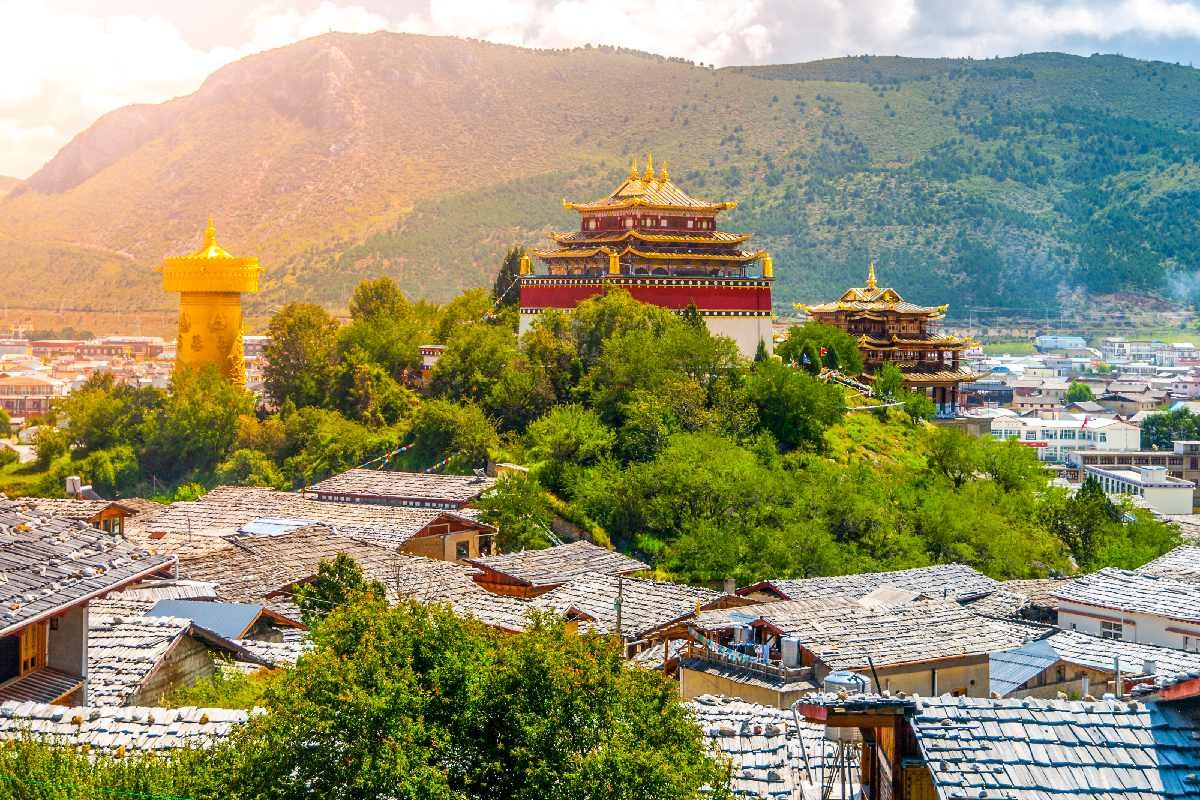
.jpg)
Bac Ninh cycling lets you experience the beautiful Vietnamese countryside in the northern Vietnam. Pedaling on the back roads, through rural village lanes while greeting local farmers and school kids as you pass by, all add to an immersive experience!
May 28, 2025
.jpg)
Electric bikes, or e-bikes use rechargeable batteries to assist cyclists with a small electric motor. E-bikes are particularly suitable for holidays, as they allow people who do not share the same level of fitness to enjoy cycling activities together. Cycling in Vietnam with our electric bicycles is a truly amazing experience — They help cyclists ride longer distances per day trip, and navigate routes with uphill sections more easily. This makes a wider range of destinations accessible to a wider range of cyclists, including senior cycling tourists. Wandering through rural villages, eating delicious food, and enjoying this country’s great landscape. From long-distance treks to shorter rides and sightseeing, there is a route for everyone!
May 28, 2025
.jpg)
We have a wide range of kids bikes for our bike tours in Hanoi Vietnam. Our small bicycles are used for both boys and girls. There is no difference between boy bikes and girl bikes. The bike frame is the same – Children’s bikes are sized by wheel rather than frame because it’s the wheels that determine the proportions of the rest of the bike. Make sure your child can operate the brake and gear levels comfortably, and that the pedals are positioned for safe stopping.
May 28, 2025
.jpg)
A single speed bicycles or a fixed gear bike is a type of bicycle with a single gear ratio. These bicycles are without derailleur gears, hub gearing or other methods for varying the gear ratio of the bicycle. There are many types of single speed bicycles such as single speed bikes for children, cruiser type bicycles, classic commuter bicycles, unicycles, bicycles designed for track racing, fixed-gear road bicycles, and single-speed mountain bikes.
May 28, 2025
.jpg)
Mountain bikes are designed to be ridden over rugged terrain and technical trails with logs, rocks, roots and other obstacles. They have a sharp frame geometry that puts the rider in a commanding position to pedal and climb efficiently. They have lower gear ratios that allow riders to pedal through steep and difficult terrain. Because of their intended use, mountain bikes are sturdy and overbuilt to handle the abuse of the trails. They usually have larger, heavily knobbed tires and strong brakes like hydraulic disc brakes. Many mountain bikes feature a kind of suspension shock over the front tire or both front and rear, allowing the frame to comply with the bumps, jumps and challenges of the trail.
May 28, 2025
.jpg)
Giant are the world’s leading brand for quality and safety in bikes. Giant Anyroad bicycles are designed with a lightweight yet durable ALUXX alloy frame featuring a taller headtube and increased toptube stand-over distance for confident handling.
May 28, 2025
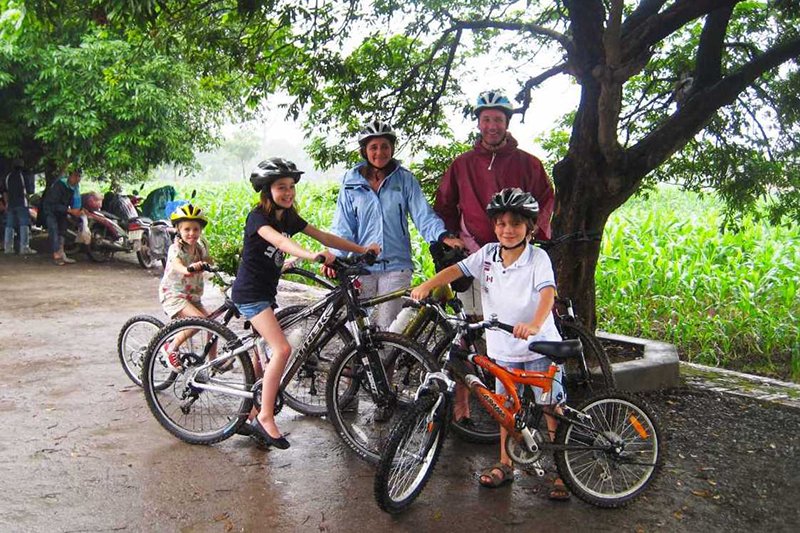
Hanoi Cycling lets you experience the beautiful countryside of the Vietnam’s capital, as well as rural Hanoi village life from up close. Pedaling on the back roads, through countryside lanes while greeting local farmers and school kids as you pass by, all add to an immersive experience!
May 28, 2025
.jpg)
Hybrid bicycles are a combination of a road bike and a mountain bike. Hybrid bikes feature relaxed frame geometry and raised handlebars, meaning that you sit up straigh
May 28, 2025
.jpg)
At the inaugural night tour of Cuc Phuong National Park in northern Vietnam on Saturday, close to a hundred visitors took part in a variety of activities.
A park spokesman said that most visitors were excited to take part in the trip.
May 28, 2025
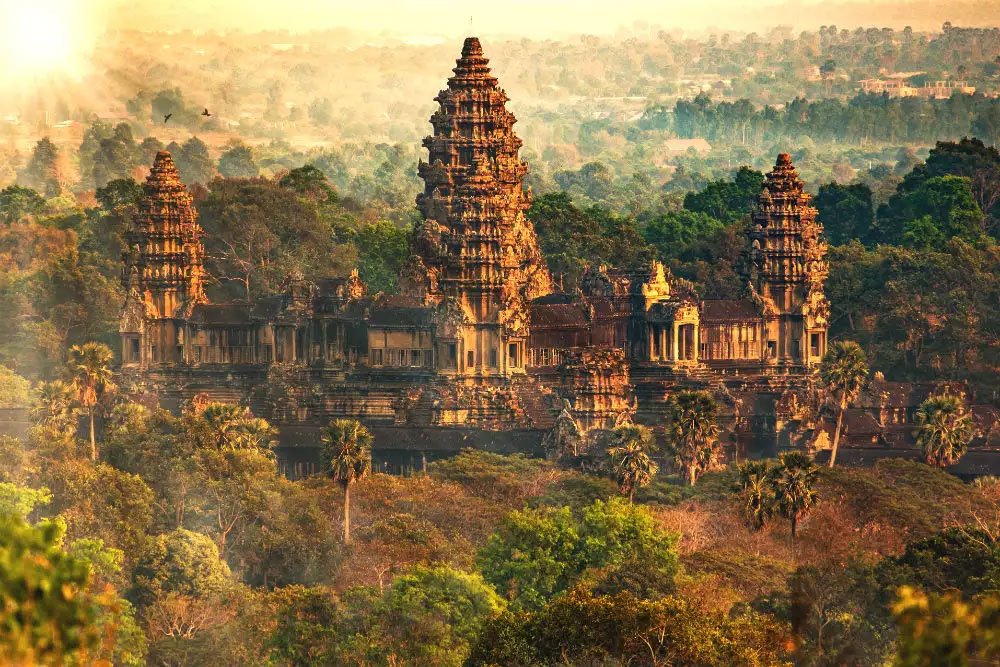
In Cambodia, the climate is tropical, and stays warm all year long. It is governed by the monsoon winds, so that this country has two main seasons in a year.
May 28, 2025
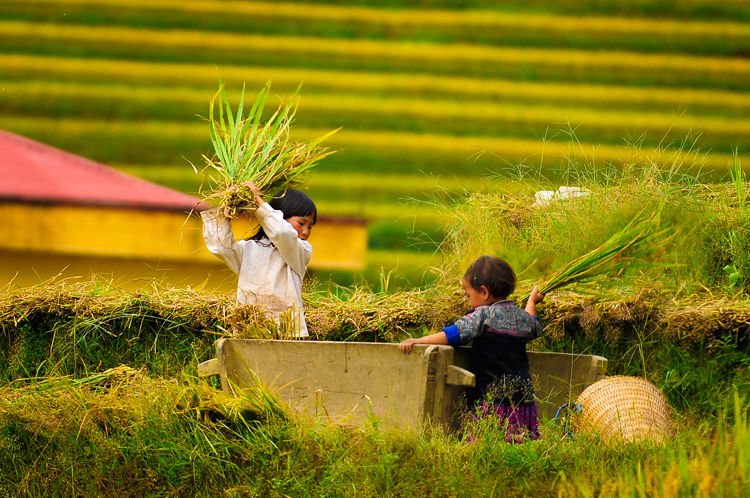
Mu Cang Chai is a highland district of Yen Bai province, about 280km from Hanoi. Each season, this place receives thousand domestic and international tourists. The district lies at the foot of the Hoang Lien Mountains, at an altitude of 1,000 m above sea level. To reach Mu Cang Chai district, go through Khau Pha pass - one of the four Great Passes of the Northwest.
May 28, 2025

People said that “If one has not visited floating market, he has not visited the south-west of Vietnam”. Literally, floating markets which have been around for a long time make the liveliest part of life in the south-west, the land of rivers, canals and ditches.
May 28, 2025

If you are in Vietnam on September 2, you will feel the extraordinary daily life of Vietnamese people. So what activities are recommended on this day?
May 28, 2025

Pottery class Bat Trang is one of activity with unique experience which help people to reduce stress and improve the creativity.
May 28, 2025
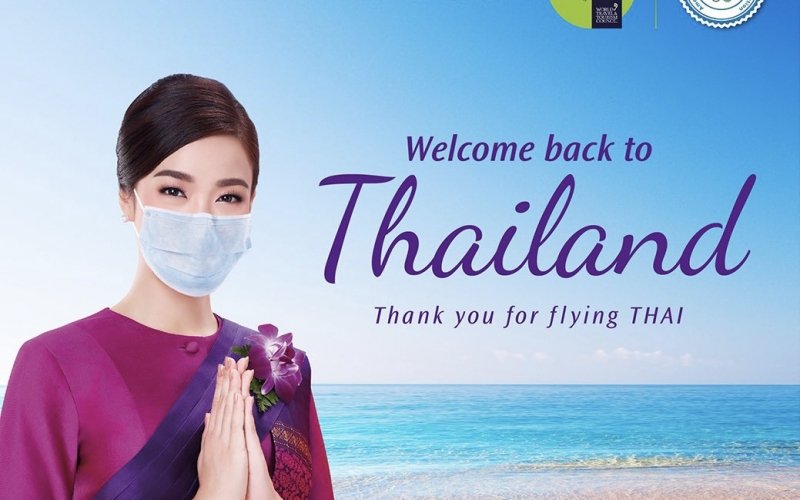
Prime Minister Prayut Chan-o-cha says Thailand will open the country to visitors from 46 countries instead of only 10 Covid-19 low-ríkyy countries announced earlier, starting from Nov 1.
May 28, 2025